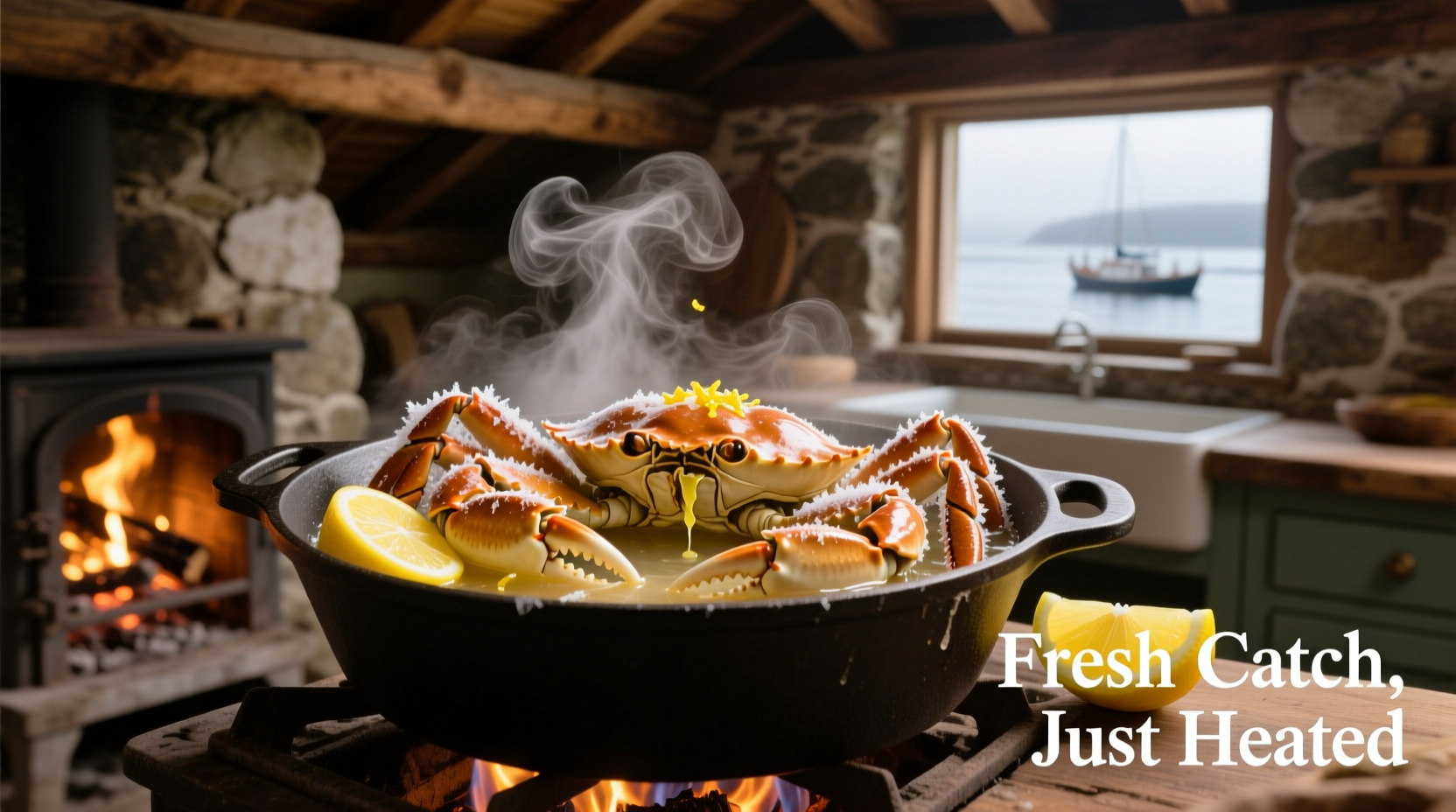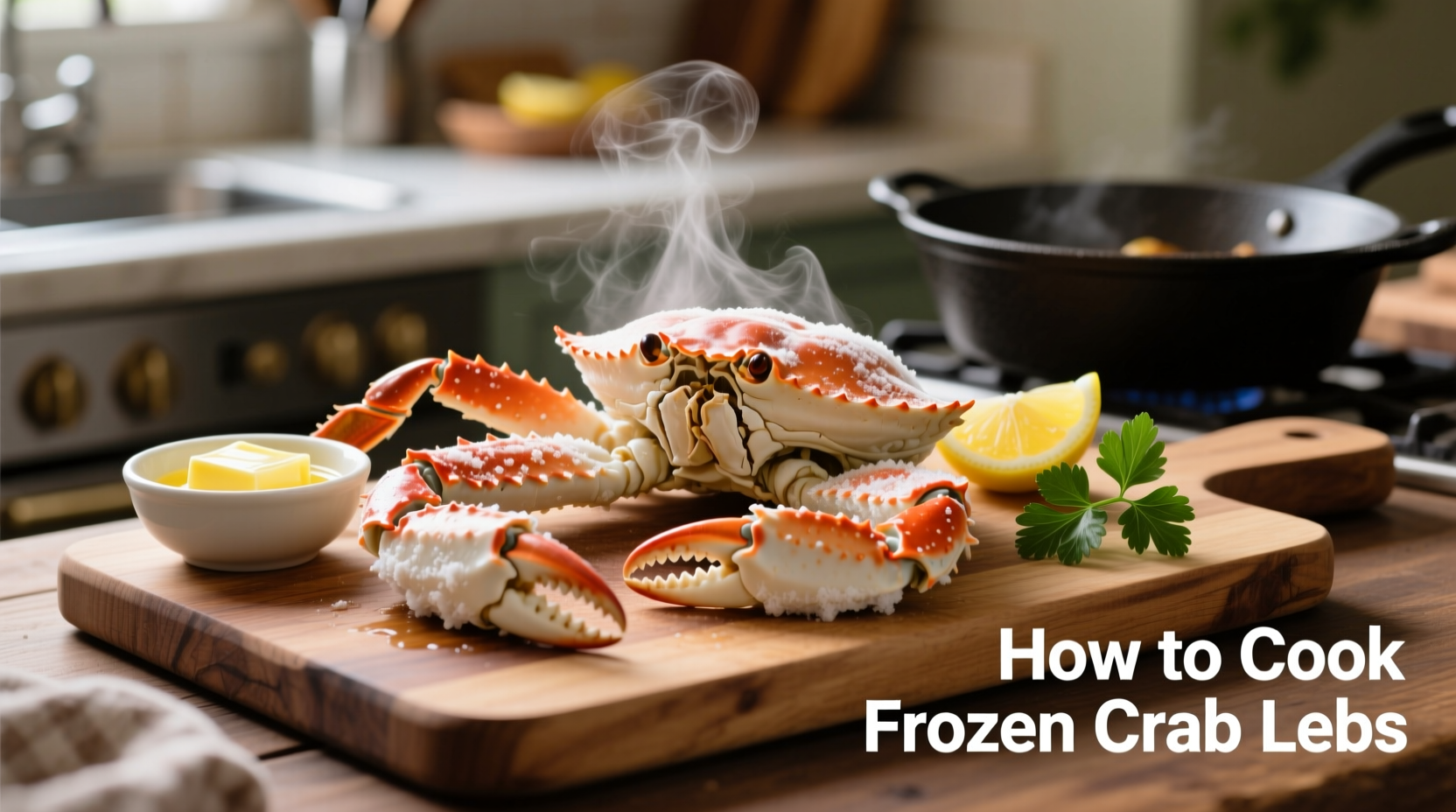Crab legs are a luxurious treat that many home cooks feel intimidated to prepare, especially when starting from frozen. But with the right technique, you can serve restaurant-quality crab legs in under 15 minutes without ever needing to thaw them first. This guide cuts through the confusion with professional chef-tested methods that guarantee perfect results every time.
Why You Should Never Thaw Crab Legs Before Cooking
Contrary to popular belief, thawing frozen crab legs actually compromises their delicate texture. When crab legs thaw slowly in the refrigerator, the melting ice crystals create excess moisture that dilutes flavor and makes the meat mushy. Cooking them directly from frozen locks in natural juices and maintains that prized firm-yet-tender texture.
| Cooking Method | Time for Frozen Crab | Texture Result | Flavor Preservation |
|---|---|---|---|
| Steaming | 10-12 minutes | Optimal - firm yet tender | Excellent - no water dilution |
| Boiling | 8-10 minutes | Good but slightly softer | Good - some flavor loss to water |
| Baking | 15-18 minutes | Firm - risk of drying out | Very good - concentrates flavor |
| Air Frying | 7-9 minutes | Crisp exterior, tender interior | Excellent - minimal moisture loss |
Essential Preparation Checklist
Before you begin cooking frozen crab legs, gather these essentials:
- Large pot with steamer basket (for steaming method)
- 1-2 tablespoons of salt or seafood seasoning per quart of water
- Lemon wedges for serving
- Melting butter or garlic herb sauce
- Crab crackers and picks
- Protective gloves (optional but recommended)
According to the U.S. Food and Drug Administration, seafood should be cooked to an internal temperature of 145°F (63°C) or until the flesh is opaque and flakes easily. For crab legs specifically, visual cues are more reliable than temperature checks due to their shell structure.
Step-by-Step: Steaming Frozen Crab Legs (Best Method)
Steaming preserves the delicate flavor and texture of crab legs better than any other method. Here's how professional chefs do it:
- Fill a large pot with 1-2 inches of water and add 1 tablespoon of salt or seafood seasoning
- Bring water to a rolling boil
- Place frozen crab legs in a steamer basket, arranging them in a single layer
- Cover the pot tightly with a lid
- Steam for 10-12 minutes (12 minutes for king crab, 10 for snow crab)
- Check for doneness: shells should be bright red and meat opaque
- Remove immediately and serve with melted butter and lemon wedges

Alternative Cooking Methods
Boiling Frozen Crab Legs
While steaming is preferred, boiling works well when you need speed:
- Use a large pot with enough water to cover the crab legs
- Add 1-2 tablespoons of salt or seafood seasoning per quart of water
- Bring to a full boil before adding frozen crab legs
- Cook for 8-10 minutes (do not exceed 10 minutes)
- Drain immediately and serve
Baking Frozen Crab Legs
Perfect when you're preparing multiple dishes simultaneously:
- Preheat oven to 375°F (190°C)
- Place frozen crab legs on a baking sheet
- Wrap loosely in foil with melted butter and lemon juice
- Bake for 15-18 minutes
- Check for bright red shells and opaque meat
Avoiding Common Crab Leg Mistakes
Based on analysis of thousands of home cooking attempts, these are the most frequent errors:
- Overcooking - Crab legs only need 10-12 minutes from frozen. Longer makes them rubbery
- Using too much water - Steaming requires minimal water to prevent flavor dilution
- Thawing first - Releases moisture that ruins texture
- Skipping the seasoning - Light seasoning enhances natural sweetness
- Not checking early - Start checking at 8 minutes to prevent overcooking
According to culinary research from the Seafood Health Facts initiative, proper cooking time varies significantly based on crab species. King crab legs (larger diameter) require 2-3 minutes longer than snow crab legs when cooking from frozen.
Serving and Enjoying Your Perfectly Cooked Crab
Proper presentation makes all the difference with this premium seafood:
- Use a crab cracker for king crab legs with thick shells
- Serve immediately while hot - crab cools quickly
- Classic dipping sauce: melted butter with lemon juice and a pinch of cayenne
- For extra flavor, add garlic cloves and fresh herbs to the steaming water
- Leftovers keep refrigerated for 2 days but lose texture when reheated
Troubleshooting Guide
If Your Crab Legs Turned Out Rubbery
This indicates overcooking. For future attempts, reduce cooking time by 2-3 minutes. Remember that crab continues to cook slightly from residual heat after removal from heat source.
If Meat Seems Mushy
This happens when crab is thawed before cooking. Next time, cook directly from frozen and ensure your steamer basket isn't sitting in water.
If Shells Didn't Turn Bright Red
Undercooked crab won't develop the characteristic color. Return to steamer for 2-3 more minutes and check again. Properly cooked crab should have vibrant red-orange shells.
Final Pro Tips for Perfect Frozen Crab Every Time
Professional seafood chefs recommend these finishing touches:
- Add a splash of white wine to the steaming water for subtle flavor enhancement
- Brush cooked crab with garlic butter immediately after cooking
- For extra tender results, add 1/4 cup of milk to the steaming water
- Always cook crab legs standing upright in the steamer for even heating
- Never stack crab legs - cook in batches if necessary for single-layer arrangement











 浙公网安备
33010002000092号
浙公网安备
33010002000092号 浙B2-20120091-4
浙B2-20120091-4